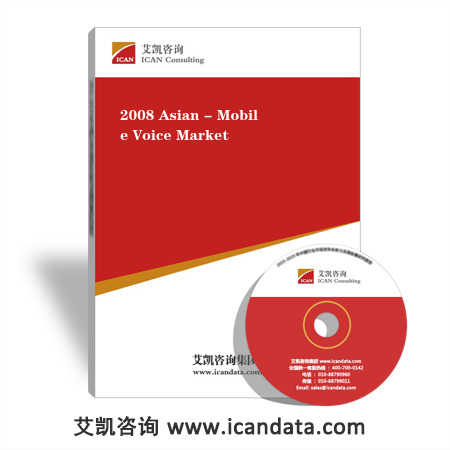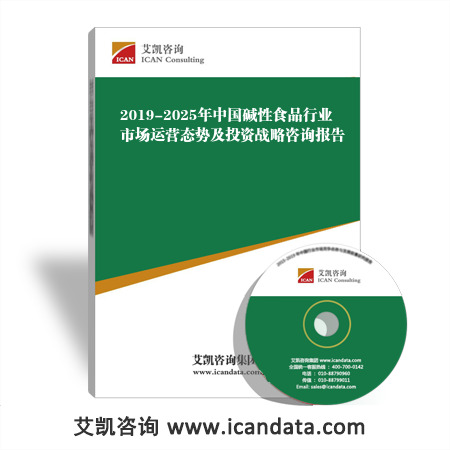导读:移动语音,Asian,Mobile Voice Abstract This Asia market report covers 35 countries in North, South and Central Asia. The topic is mobile deployments and developments particularly focussing on voice application for mobile use. Mobile markets in Asi
数据来源与研究方法:
- 对行业内相关的专家、厂商、渠道商、业务(销售)人员及客户进行访谈,获取最新的一手市场资料;
- 艾凯咨询集团对长期监测采集的数据资料;
- 行业协会、国家统计局、海关总署、国家发改委、工商总局等政府部门和官方机构的数据与资料;
- 行业公开信息;
- 行业企业及上、下游企业的季报、年报和其它公开信息;
- 各类中英文期刊数据库、图书馆、科研院所、高等院校的文献资料;
- 行业资深专家公开发表的观点;
- 对行业的重要数据指标进行连续性对比,反映行业发展趋势;
- 通过专家咨询、小组讨论、桌面研究等方法对核心数据和观点进行反复论证。
报告简介:

Abstract
This Asia market report covers 35 countries in North, South and Central Asia. The topic is mobile deployments and developments particularly focussing on voice application for mobile use.
Mobile markets in Asia continued experiencing rapid growth during 2007, despite many countries close to or over the 90% penetration mark. This has resulted in the Asia region being home to the fastest growing telecoms markets in the world. Excluding the highly penetrated markets, growth has been in excess of 20% in all countries, with average annual growth being well over 30%. This is particularly relevant in India and China where monthly net additions are regularly in excess of 10 million subscribers. These two countries alone account for over 20% and 40% overall market share in the Asia-Pacific region respectively.
There is still room for substantial growth. Markets with large populations and relatively low penetration rates, such as India, China, Philippines, Pakistan, Vietnam and Indonesia, will continue to grow at a rapid rate. In the more mature markets like Japan, Taiwan and South Korea, mobile numbers will rise less than 5%. Growth is being driven by various factors, including government investment to drive the economy; infrastructure building after years of neglect or fixing the after-effects in war torn countries, and also major foreign investment.
South Korea has become a leading global mobile phone player as a result of a number of key factors coming together. First, tariffs and terminal costs have been constantly forced downwards, creating a huge surge in public demand. Second, the introduction of competition in 1996 provided a major impetus to growth. Third, the government’s very active role in helping to build the mobile market has been instrumental in making South Korea one of the mobile phone powerhouses on the global scene. Fourth, the nationwide roll out of CDMA technology has been a real boost to the market. Unlike most other countries where GSM is the norm, the South Korean Government mandated the use of CDMA. Fifth, camera-equipped mobile phones should not to be overlooked as simply a fad; these phones played an important role in increasing mobile service subscriptions and sales of mobile handsets. And finally, 3G phones and advanced mobile services such as mobile gaming, m-banking and m-commerce have kept the mobile sector invigorated.
In the developing economies quick and easy mobile uptake is the preferred, and often only, option for subscribers, exacerbated by low fixed-line deployments. These countries also offer investors the promise of continued growth of the mobile infrastructure and subscribers. While subscriber growth and market share is important in the developing economies, there comes a point where the venture must result in profits.
Operators still face the huge challenge of trying to prevent ARPU slide as mobile services spread to poorer parts of the population. To an extent, a large customer base will help to offset low spend but it is also hoped that new non-voice services will help to drive revenue. Operators are developing new mobile services such as mobile banking, remittance payments, and mobile health services that take advantage of a lack of access by the poor to social infrastructure such as banks and hospitals.
China
In the past five years, as one of its ‘pillar’ industries, China’s telecom service industry has grown at a faster rate than the country’s GDP. Revenue from basic telecom service contributes approximately 2.1% of GDP, while value-added telecom services contribute a further 3.2% to total GDP. China continues to extend its lead as the single largest mobile market in the world. The vast majority of services are GSM – China is the largest GSM market in the world – though China Unicom’s CDMA service is the second largest in the world. By February 2008, China had 565 million mobile phone users, exceeding the fixed-line subscription base of 362 million.
At the end of 2007, mobile penetration in China stood at 41%, following a record level of subscriber additions during the year. The robust growth was due to an expanding rural market and the increasing number of people who have acquired more than one mobile phone. Despite this growth, both China Mobile and China Unicom have been grappling with a steady decline in the average revenue earned from new users. As in other markets around the world, this trend has been fuelled by the growing popularity of prepaid cards instead of the more lucrative postpaid subscriber contracts.
China Mobile chief Wang Jianzhou predicted that, based on the current population of 1.3 billion, China’s mobile market should reach saturation at about 800 million subscribers. Foreign experience suggests that once the 50% mark is reached, growth slows down.
Hong Kong
Hong Kong’s mobile market has some of the cheapest tariffs in the world. This is one of the reasons why it is has such a high penetration rate. An ongoing price war has cut mobile phone air-time rates to levels where operators have become increasingly reliant on provision of non-voice value-added services to maintain margins. This, in turn, has made 2.5G and 3G services of considerable importance to the operators.
India
Driven by cheap call rates, low handset prices and rising incomes among the estimated 300 million of the population that are described as the country’s middle class, the boom in India’s mobile market has continued into 2008. Also the operators are increasingly eyeing the poorer rural areas as potential markets for their services.
India’s mobile market finished the 2007 year strongly with over 233 million subscribers in the sector – according to the telecom regulator’s figures which cover GSM, CDMA and WLL. The mobile operators have been attracting new customers with call rates as low as US$0.01 a minute and by offering cheap handsets. While offering some of the lowest mobile tariffs in the world, the market also has the highest usage in the world with an average customer using 500 minutes per month. In the meantime, the fixed-line market has experienced falling customer numbers, with the overall base dropping to 39.3 million by year-end.
The government continues to be very positive about the future of India’s telecoms market. In February 2007, ahead of its national budget, the government predicted that the number of phone connections, including fixed-line, GSM and CDMA subscribers, would rise to 650 million by 2012, from 200 million at the time.
Indonesia
At the end of 2007 almost 90 million of Indonesia’s 245 million population had a mobile phone, providing plenty of room for growth over the next three years. Coming into 2008 the market continued to expand, with annual growth still running at about 30% on the back of cheaper tariffs and handset prices. But the market is also getting crowded and operators have been slashing prices in a bid to entice customers in a country where mobile take-up is set to surge to 120 million by the end of 2008. ARPU is also falling but with this being offset by the increasing subscriber base, companies are planning to target the lower income groups.
Pakistan
Pakistan’s mobile market continued to run hot in 2007 and into 2008. By any measure, 2007 was another remarkable year for the mobile sector; subscribers totalled 77 million by year-end, representing annual growth of 60%, coming on top of 120% growth in 2006. Mobile penetration was almost 50% by end-2007. Strong marketing by the operators continues to be central to Pakistan’s mobile growth phenomenon. As well as marketing, cheap call rates and falling handset prices have also been key factors in driving demand for mobiles.
Philippines
By March 2008 55 million of the Philippine’s 90 million population were subscribing to mobile services; with the annual growth rate continuing at around 15%. The subscriber base can be expected to reach around 75 million by 2010. On the back of the huge popularity of prepaid services, mobile penetration had reached 59% by end-2007.
Thailand
Thailand’s mobile market experienced yet another strong year of growth in 2007 and this has continued into 2008. Although growth slowed somewhat from a few years earlier, the market has continued its long run of robust expansion, a run that started in 2000. Despite expectations of a cooling market, by end-2008 the 65 million mobile subscriber mark is expected to be reached.
Vietnam
Vietnam’s mobile market started off slowly but has subsequently developed rapidly – growing at an annual rate of between 50% and 100% per year. Judging by the interest shown by foreign operators in investing in the Vietnam market, there is still plenty of room for further growth.
Contents
- 1.1 Overview of Afghanistan’s mobile market
- 1.1.1 Mobile statistics
- 1.1.1 Mobile statistics
- 1.2 Mobile licences
- 1.3 Mobile technologies
- 1.3.1 Third Generation (3G) mobile
- 1.3.1 Third Generation (3G) mobile
- 1.4 Satellite mobile
- 2.1 Overview of Armenia’s mobile market
- 2.1.1 Mobile statistics
- 2.1.1 Mobile statistics
- 3.1 Overview of Azerbaijan’s mobile market
- 3.1.1 Mobile statistics
- 3.1.1 Mobile statistics
- 3.2 Mobile technologies
- 3.2.1 Trunk Mobile Radio (TMR)
- 3.2.1 Trunk Mobile Radio (TMR)
- 4.1 Overview of Bangladesh’s mobile market
- 4.1.1 Mobile statistics
- 4.1.1 Mobile statistics
- 4.2 Interconnection issues
- 4.3 Mobile technologies
- 4.3.1 Handsets
- 4.3.2 Other services
- 4.3.1 Handsets
- 5.1 Overview of Bhutan’s mobile market
- 5.1.1 Mobile statistics
- 5.1.2 Second mobile licence
- 5.1.1 Mobile statistics
- 5.2 Mobile technologies
- 5.2.1 Third Generation (3G) mobile
- 5.2.1 Third Generation (3G) mobile
- 6.1 Overview of Brunei Darussalam’s mobile market
- 6.1.1 Mobile statistics
- 6.1.1 Mobile statistics
- 6.2 Mobile voice services
- 6.2.1 Satellite mobile
- 6.2.1 Satellite mobile
- 7.1 Overview of Cambodia’s mobile market
- 7.1.1 Mobile statistics
- 7.1.1 Mobile statistics
- 7.2 Regulatory issues
- 7.3 Mobile services
- 7.3.1 Wireless Local Loop (WLL)
- 7.3.1 Wireless Local Loop (WLL)
- 8.1 Overview of China’s mobile market
- 8.1.1 Mobile Internet
- 8.1.2 Analysis – prevalence of mobile phones in China’s city centres
- 8.1.3 Mobile statistics
- 8.1.1 Mobile Internet
- 8.2 Regulatory issues
- 8.2.1 Price wars
- 8.2.2 Subscriber registration
- 8.2.3 Calling Party Pays (CPP)
- 8.2.4 Share listing
- 8.2.5 Open information
- 8.2.6 Manufacturing quality
- 8.2.7 Mobile multimedia alliance
- 8.2.1 Price wars
- 8.3 Mobile technologies
- 8.3.1 GSM
- 8.3.2 CDMA
- 8.3.3 PAS/PHS
- 8.3.4 Third Generation (3G) mobile
- 8.3.5 BuddeComm analyses
- 8.3.6 TD-SCDMA
- 8.3.7 WCDMA
- 8.3.8 CDMA2000
- 8.3.9 Fourth Generation (4G) mobile
- 8.3.10 WiMAX
- 8.3.1 GSM
- 8.4 Mobile handset market
- 8.4.1 Overview
- 8.4.1 Overview
- 8.5 Mobile voice services
- 8.5.1 Prepaid cards (SIM and PIM cards)
- 8.5.2 Satellite mobile
- 8.5.1 Prepaid cards (SIM and PIM cards)
- 9.1 Overview of Georgia’s mobile market
- 9.1.1 Mobile statistics
- 9.1.1 Mobile statistics
- 9.2 Mobile technologies
- 9.2.1 Third Generation (3G) mobile
- 9.2.1 Third Generation (3G) mobile
- 10.1 Overview of Hong Kong’s mobile market
- 10.1.1 Mobile statistics
- 10.1.1 Mobile statistics
- 10.2 Regulatory issues
- 10.2.1 Mobile Number Portability (MNP)
- 10.2.2 Spectrum licensing
- 10.2.3 Personal Communications Services (PCS)
- 10.2.4 Fixed-Mobile Convergence (FMC)
- 10.2.1 Mobile Number Portability (MNP)
- 10.3 Mobile technologies
- 10.3.1 Third Generation (3G) mobile
- 10.3.1 Third Generation (3G) mobile
- 10.4 Mobile voice services
- 10.4.1 Prepaid
- 10.4.1 Prepaid
- 11.1 Overview of India’s mobile market
- 11.1.1 Market background
- 11.1.2 Mobile statistics
- 11.1.3 Mobile market segments
- 11.1.4 Pricing and marketing strategies
- 11.1.1 Market background
- 11.2 Regulatory issues
- 11.2.1 New Telecommunications Policy – 1999 (NTP-99)
- 11.2.2 Year 2007
- 11.2.1 New Telecommunications Policy – 1999 (NTP-99)
- 11.3 Mobile technologies
- 11.3.1 Overview of mobile technologies used in India
- 11.3.2 GSM
- 11.3.3 CDMA
- 11.3.4 Third Generation (3G) mobile
- 11.3.1 Overview of mobile technologies used in India
- 11.4 Mobile voice services
- 11.4.1 Prepaid
- 11.4.2 Satellite mobile
- 11.4.1 Prepaid
- 12.1 Overview of Indonesia’s mobile market
- 12.1.1 Mobile statistics
- 12.1.1 Mobile statistics
- 12.2 Mobile technologies
- 12.2.1 Analogue services (AMPS and NMT)
- 12.2.2 GSM
- 12.2.3 CDMA
- 12.2.4 General Packet Radio Service (GPRS)
- 12.2.5 Third Generation (3G) mobile
- 12.2.1 Analogue services (AMPS and NMT)
- 12.3 Mobile voice services
- 12.3.1 Prepaid
- 12.3.2 Satellite mobile
- 12.3.1 Prepaid
- 13.1 Overview of Japan’s mobile market
- 13.1.1 Background
- 13.1.2 Mobile statistics
- 13.1.3 Market developments
- 13.1.4 New entrants into the mobile market
- 13.1.5 IP mobile telephony to hit the Japanese market around 2008
- 13.1.1 Background
- 13.2 Mobile technologies
- 13.2.1 Personal Digital Cellular (PDC)
- 13.2.2 CDMA
- 13.2.3 Personal Handy Service (PHS)
- 13.2.4 Third Generation (3G) mobile
- 13.2.5 Fourth Generation (4G) mobile
- 13.2.6 Mobile handset market
- 13.2.1 Personal Digital Cellular (PDC)
- 13.3 Mobile services
- 13.3.1 Overview
- 13.3.2 Mobile Enterprise Alliance Japan
- 13.3.1 Overview
- 13.4 Mobile voice services
- 13.4.1 Prepaid cards
- 13.4.2 Mobile satellite services (MSS)
- 13.4.1 Prepaid cards
- 14.1 Overview of Kazakhstan’s mobile market
- 14.1.1 Mobile statistics
- 14.1.1 Mobile statistics
- 14.2 Mobile technologies
- 14.2.1 Third Generation (3G) mobile
- 14.2.2 Trunk Mobile Radio (TMR)
- 14.2.1 Third Generation (3G) mobile
- 15.1 Overview of Kyrgyzstan’s mobile market
- 15.1.1 Mobile statistics
- 15.1.1 Mobile statistics
- 16.1 Overview of mobile market in Laos
- 16.1.1 Mobile statistics
- 16.1.1 Mobile statistics
- 17.1 Overview of Macau’s mobile market
- 17.1.1 Mobile statistics
- 17.1.1 Mobile statistics
- 17.2 Mobile technologies
- 17.2.1 Push-to-talk (PTT)
- 17.2.1 Push-to-talk (PTT)
- 18.1 Overview of Malaysia’s mobile market
- 18.1.1 Mobile statistics
- 18.1.2 Mobile infrastructure
- 18.1.1 Mobile statistics
- 18.2 Mobile technologies
- 18.2.1 Third Generation (3G) mobile
- 18.2.2 Mobile Virtual Network Operators (MVNOs)
- 18.2.1 Third Generation (3G) mobile
- 18.3 Mobile voice services
- 18.3.1 Prepaid cards
- 18.3.1 Prepaid cards
- 19.1 Overview of Maldives’ mobile market
- 19.1.1 Mobile statistics
- 19.1.1 Mobile statistics
- 20.1 Overview of Mongolia’s mobile market
- 20.1.1 Mobile statistics
- 20.1.1 Mobile statistics
- 21.1 Overview of Myanmar’s mobile market
- 21.1.1 Mobile statistics
- 21.1.1 Mobile statistics
- 21.2 Mobile services
- 21.2.1 Satellite mobile
- 21.2.2 Mobile Broadcasting
- 21.2.1 Satellite mobile
- 22.1 Overview of Nepal’s mobile market
- 22.1.1 Mobile statistics
- 22.1.1 Mobile statistics
- 22.2 Satellite mobile
- 23.1 Overview of North Korea’s mobile market
- 23.2 Mobile technologies
- 23.2.1 GSM
- 23.2.2 CDMA
- 23.2.1 GSM
- 24.1 Overview of Pakistan’s mobile market
- 24.1.1 Mobile statistics
- 24.1.2 Competitive market
- 24.1.1 Mobile statistics
- 24.2 Regulatory issues
- 24.2.1 Additional licences
- 24.2.2 Calling Party Pays (CPP)
- 24.2.3 Licensing in Azad Jammu and Kashmir
- 24.2.1 Additional licences
- 24.3 Mobile voice services
- 24.3.1 Prepaid
- 24.3.2 Satellite mobile
- 24.3.1 Prepaid
- 25.1 Overview of the Philippines’ mobile market
- 25.1.1 Mobile statistics
- 25.1.1 Mobile statistics
- 25.2 Regulatory issues
- 25.2.1 Mobile licences
- 25.2.1 Mobile licences
- 25.3 Mobile technologies
- 25.3.1 Personal Communication Services (PCS)
- 25.3.2 Third Generation (3G) mobile
- 25.3.1 Personal Communication Services (PCS)
- 25.4 Mobile voice services
- 25.4.1 Prepaid cards
- 25.4.1 Prepaid cards
- 26.1 Overview of Singapore’s mobile market
- 26.1.1 Mobile statistics
- 26.1.2 Average Revenue per User (ARPU)
- 26.1.1 Mobile statistics
- 26.2 Regulatory issues
- 26.2.1 Tariffs
- 26.2.2 Mobile billing systems
- 26.2.3 Mobile Number Portability (MNP)
- 26.2.4 Registration of prepaid services
- 26.2.5 Additional spectrum auction
- 26.2.1 Tariffs
- 26.3 Mobile technologies
- 26.3.1 GSM
- 26.3.2 CDMA
- 26.3.3 Wired with Wireless Program
- 26.3.4 Third Generation (3G) mobile
- 26.3.1 GSM
- 26.4 Mobile voice services
- 26.4.1 Prepaid
- 26.4.2 International roaming
- 26.4.3 Satellite mobile
- 26.4.4 Content
- 26.4.1 Prepaid
- 27.1 Overview of South Korea’s mobile market
- 27.1.1 Introduction
- 27.1.2 Technology testbed
- 27.1.3 Mobile statistics
- 27.1.4 Mobile growth forecast
- 27.1.5 Mobile Virtual Network Operators (MVNOs)
- 27.1.6 Mobile phone ‘addiction’ in South Korea
- 27.1.1 Introduction
- 27.2 Regulatory issues
- 27.3 Mobile technologies
- 27.3.1 Analogue (AMPS)
- 27.3.2 CDMA
- 27.3.3 GSM-CDMA interoperability
- 27.3.4 CDMA2000
- 27.3.5 WCDMA
- 27.3.6 Personal Communication Service (PCS)
- 27.3.7 One-Phone: fixed and mobile services over one device
- 27.3.8 Third Generation (3G) mobile in South Korea
- 27.3.9 Fourth Generation (4G) mobile in South Korea
- 27.3.10 Mobile handset market
- 27.3.1 Analogue (AMPS)
- 27.4 Mobile voice services
- 27.4.1 Market overview
- 27.4.2 Satellite mobile
- 27.4.1 Market overview
- 28.1 Overview of Sri Lanka’s mobile market
- 28.1.1 Mobile statistics
- 28.1.1 Mobile statistics
- 28.2 Mobile technologies
- 28.2.1 Third Generation (3G) mobile
- 28.2.1 Third Generation (3G) mobile
- 28.3 Satellite mobile
- 29.1 Overview of Taiwan’s mobile market
- 29.1.1 Mobile statistics
- 29.1.1 Mobile statistics
- 29.2 Regulatory issues
- 29.2.1 Impact of competition
- 29.2.2 Low tier mobile licences
- 29.2.1 Impact of competition
- 29.3 Mobile technologies
- 29.3.1 Third Generation (3G) mobile
- 29.3.2 Next generation services
- 29.3.3 Mobile handset market
- 29.3.1 Third Generation (3G) mobile
- 29.4 Mobile voice services
- 29.4.1 Prepaid cards
- 29.4.2 Personal Handyphone Service (PHS)/Personal Access System (PAS)
- 29.4.1 Prepaid cards
- 30.1 Overview of Tajikistan’s mobile market
- 30.1.1 Mobile statistics
- 30.1.1 Mobile statistics
- 30.2 Mobile technologies
- 30.2.1 Third Generation (3G) mobile
- 30.2.1 Third Generation (3G) mobile
- 31.1 Overview of Thailand’s mobile market
- 31.1.1 Mobile statistics
- 31.1.2 Competition
- 31.1.3 Interconnection arrangements
- 31.1.4 Mobile Virtual Network Operators (MVNOs)
- 31.1.1 Mobile statistics
- 31.2 Mobile technologies
- 31.2.1 PCN services
- 31.2.2 General Packet Radio Service (GPRS)
- 31.2.3 Enhanced Data for GSM Evolution (EDGE)
- 31.2.4 Third Generation (3G) mobile
- 31.2.5 Mobile handsets
- 31.2.1 PCN services
- 31.3 Mobile voice services
- 31.3.1 Prepaid
- 31.3.1 Prepaid
- 32.1 Overview of Timor Leste’s mobile market
- 32.1.1 Mobile statistics
- 32.1.1 Mobile statistics
- 33.1 Overview of Turkmenistan’s mobile market
- 33.1.1 Mobile statistics
- 33.1.1 Mobile statistics
- 34.1 Overview of Uzbekistan’s mobile market
- 34.1.1 Mobile statistics
- 34.1.1 Mobile statistics
- 35.1 Overview of Vietnam’s mobile market
- 35.2 Market background
- 35.2.1 Mobile statistics
- 35.2.1 Mobile statistics
- 35.3 Tariffs
- 35.4 Mobile technologies
- 35.4.1 Third Generation (3G) mobile
- 35.4.1 Third Generation (3G) mobile
- 35.5 Mobile voice services
- 35.5.1 Prepaid cards
- 35.5.1 Prepaid cards
移动语音
















